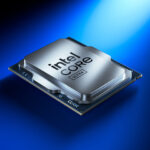 With the upcoming release of Arc Alchemist getting closer and closer by the day, the company has agreed to the fact that it may just be entering the GPU market at a very turbulent time. Intel Graphics Chief Architect Raja Koduri in a recent interview revealed that Intel may not be able to produce enough cards to meet the expected demand even though the graphics community has been entirely welcoming in recent times. Arc Alchemist is reported to be the first generation of high-performance graphics cards by Intel. According to reports making rounds, three graphics cards in the Arc Alchemist lineup would be launched by Intel. The Arc Alchemist is the lineup that Intel is using for all gaming hardware, software, and services moving forward, and the company confirmed that it will span multiple hardware generations.
With the upcoming release of Arc Alchemist getting closer and closer by the day, the company has agreed to the fact that it may just be entering the GPU market at a very turbulent time. Intel Graphics Chief Architect Raja Koduri in a recent interview revealed that Intel may not be able to produce enough cards to meet the expected demand even though the graphics community has been entirely welcoming in recent times. Arc Alchemist is reported to be the first generation of high-performance graphics cards by Intel. According to reports making rounds, three graphics cards in the Arc Alchemist lineup would be launched by Intel. The Arc Alchemist is the lineup that Intel is using for all gaming hardware, software, and services moving forward, and the company confirmed that it will span multiple hardware generations.

Koduri in an interview with Gadgets 360 says “I’ll always be very cautious, when the demand is so high and when the market is so hard. I can always use more supplies. So I’m not going to say I have enough supply in this high-demand market. I think every one of my competitors will say the same thing right now.”
Koduri is, of course, referring to the GPU shortage and the general chip shortage that started it. The multinational corporation and technology company is the only U.S. Company and the world’s largest semiconductor chip manufacturer by revenue, so the company is the most affected with shortage than a company like AMD, which has external foundries responsible for chip manufacturing.
The case with Arc Alchemist is quite different. As part of Intel’s IDM 2.0 strategy, the company is putting in place suitable systems that permit chips designers around the world to build their products individually. The strategy will permit Intel to utilize infrastructures from external foundries, external designers can also make use of infrastructures from Intel foundries as well. All this would happen with the hope of avoiding another catastrophic shortage of chips.

Intel is looking into taking advantage of external foundry just for the Arc Alchemist. The cards are being built on chipmaker TSMC’s N6 node. TSMC has suddenly become the center of attention during the chip shortage as the chipmaker of choice for AMD’s Ryzen 5000 processors and RDNA 2 graphics cards. The company is most likely operating at robust capacity, in other to meet the demand for AMD and Apple’s M1 chips. Intel GPUs just like Nvidia RTX 30-series cards will most likely be hard to come by, but unlike Nvidia, Intel isn’t taking a shot at discouraging cryptocurrency miners.
Roger Chandler, Intel’s vice president of client graphics products said “As far as like software lockouts and things of that nature, we’re not designing this product or building any features at this point that specifically target miners. As far as actions we’re taking to avoid or lock them out, it’s a product that will be in the market and people will be able to buy it. It’s not a priority for us.”
Although the challenges of card shortage persist and expected supply seem tight, Intel believes the Arc Alchemist will give a genuine threat to AMD and Nvidia. Speculations say that the flagship card will perform about as well as an RTX 3070, which is impressive for Intel’s first outing in the discrete graphics market. That’s not to mention that the card features hardware-accelerated ray tracing and Intel’s XeSS image upscaling technique.
There is still a whole lot we are yet to find out about Alchemist. XeSS is one example, a feature we expect is coming, and it looks a lot like Nvidia’s Deep Learning Super Sampling (DLSS). Intel is yet to reveal any title that would support it. In the interview with Gadgets 360, Chandler revealed that Intel is currently busy with “dozens and dozens” of studios. The cards will be set to launch within the early part of 2022, the focus is also on CES 2022, and we hope to get updates on the cards before or after the event.
Discover more from TechBooky
Subscribe to get the latest posts sent to your email.





